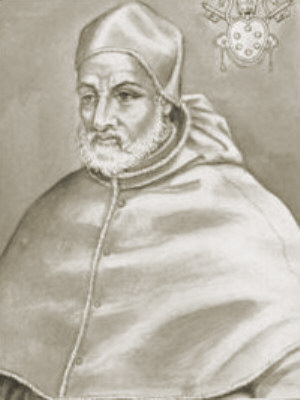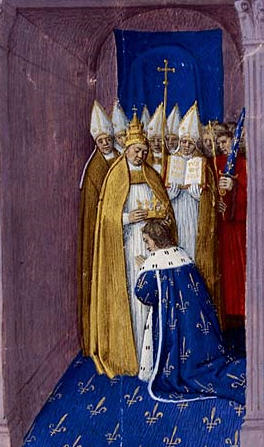|
Roman Catholic Archdiocese Of Urbino–Urbania–Sant'Angelo In Vado
The Archdiocese of Urbino–Urbania–Sant'Angelo in Vado ( la, Archidioecesis Urbinatensis–Urbaniensis–Sancti Angeli in Vado) is a Latin Church ecclesiastical territory or archdiocese of the Catholic Church in the Province of Pesaro and Urbino in the Marche region of central Italy. The current archbishop is Sandro Salvucci, appointed in January 2023. It was previously a metropolitan see. Its cathedral is a minor basilica and World Heritage Site: Basilica Cattedrale di S. Maria Assunta, in Urbino. It has two co-cathedrals, both former cathedrals of absorbed diocese whose title was also adopted: another minor basilica, the Basilica Concattedrale di S. Michele Arcangelo, dedicated to the archangel Saint Michael, in Sant’Angelo in Vado, and the Concattedrale di S. Cristoforo Martire, dedicated to the protomartyr Saint Christopher, in Urbania. History Urbino is the ancient ''Urbinum Mataurense'', a Roman '' municipium''. Urbino was held by the Ostrogoths fro ... [...More Info...] [...Related Items...] OR: [Wikipedia] [Google] [Baidu] |
Urbino Cathedral
Urbino Cathedral ( it, Duomo di Urbino, ''Cattedrale Metropolitana di Santa Maria Assunta'') is a Catholic Church, Catholic cathedral in the city of Urbino, Italy, dedicated to the Assumption of the Blessed Virgin Mary. Since 1986 it has been the seat of the Archbishop of Urbino-Urbania-Sant'Angelo in Vado, and was previously the seat of the Archbishops of Urbino. History The first cathedral on the site was built here in 1021, to replace an earlier one located outside the city walls. Under the patronage of Count Federico da Montefeltro, it was rebuilt in the 15th century, based on a design attributed to Francesco di Giorgio Martini. Construction was not finished until 1604. The west front, using stone quarried from Furlo, was designed by Camillo Morigia and completed in 1782. It was ornamented with five statues, representing the three theological virtues of Faith, Hope, and Charity, between Saint Augustine to the left and Saint John Chrysostom to the right. On 12 January 1789, ... [...More Info...] [...Related Items...] OR: [Wikipedia] [Google] [Baidu] |
Sant’Angelo In Vado
Sant'Angelo in Vado is a ''comune'' (municipality), site of Ancient Tifernum Metaurense and former bishopric in the Province of Pesaro e Urbino in the central Italian Adriatic region Marche. Geography It is located about west of Ancona and about southwest of Pesaro. Its territory is crossed by the Metauro river. The municipality borders with Apecchio, Belforte all'Isauro, Carpegna, Mercatello sul Metauro, Peglio, Piandimeleto, Urbania and Urbino. It borders also on Monte Ruperto, a ''frazione'' and small enclave of Umbria in the Marche belonging to the municipality of Città di Castello, Province of Perugia. There were two periods when there was a Roman Catholic Diocese of Sant'Angelo in Vado, although the Diocese has been suppressed since 1986. Notable locals * Federico Zuccari (1540–1609), painter and architect * Taddeo Zuccari (1529–66), painter * Saint Frances Xavier Cabrini (1850-1917), patron saint of immigrants Sports The town is represented by Vadese Calci ... [...More Info...] [...Related Items...] OR: [Wikipedia] [Google] [Baidu] |
Diocese Of Fossombrone
The Italian Catholic diocese of Fossombrone existed in the province of Pesaro and Urbino until 1986, when it was united into the diocese of Fano-Fossombrone-Cagli-Pergola. It was a suffragan of the archdiocese of Urbino."Diocese of Fossombrone" ''''. David M. Cheney. Retrieved February 29, 2016"Diocese of Fossombrone" ''GCatholic.org''. Gabriel Chow. Retrieved February 29, 2016 History |
Diocese Of Pesaro
The Archdiocese of Pesaro ( la, Archidioecesis Pisaurensis) is a Roman Catholic ecclesiastical territory in central Italy. Its see at Pesaro was elevated in status to archiepiscopal see in 2000. Its suffragans are the Diocese of Fano-Fossombrone-Cagli-Pergola and the Archdiocese of Urbino-Urbania-Sant'Angelo in Vado. History The first bishop, Florentius, is said to have governed this see in the middle of the second century, while the bishop, Decentius, according to tradition, suffered martyrdom under Diocletian. Bishop Heradianus was at the Council of Sardica in 343.Benigni, Umberto. "Diocese of Pesaro." The Catholic Encyclopedia Vol. 11. New York: Robert Appleton Company, 1911. 31 May 2021 Other bishops were: * Germanus, who went with [...More Info...] [...Related Items...] OR: [Wikipedia] [Google] [Baidu] |
Diocese Of Sinigaglia
The Diocese of Senigallia ( la, Dioecesis Senogalliensis) is a Roman Catholic ecclesiastical territory in the Marche, Italy. It has existed since the sixth century. It is a suffragan of the archdiocese of Ancona-Osimo."Diocese of Senigallia" ''''. David M. Cheney. Retrieved February 29, 2016."Diocese of Senigallia" ''GCatholic.org.org''. Gabriel Chow. Retrieved February 29, 2016. History The patron saint of Senigallia is a St. Paulinus, whose remains are said to b ...[...More Info...] [...Related Items...] OR: [Wikipedia] [Google] [Baidu] |
Diocese Of Cagli
The diocese of Cagli e Pergola was a Roman Catholic ecclesiastical territory in the Marche, central Italy, in the province of Pesaro and Urbino. Up until 1563 it was under the direct supervision of the Roman pontiff. In that year, the diocese of Urbino was elevated to metropolitan status, and Cagli became a suffragan see of Urbino. The diocese was abolished as an independent entity in 1986, when it was incorporated into the diocese of Fano-Fossombrone-Cagli-Pergola. It was still a suffragan of the archdiocese of Urbino. The historical diocese of Cagli was renamed in 1819. Pergola, which had been in the diocese of Urbino, was raised to the rank of an episcopal city and united to the See of Cagli. History Bishop Egidio (1243–59) had many controversies with the municipality of Gubbio. Under his successor the Ghibellines revolted against the papal power. After the death of Bishop Jacopo (1276), the Ghibelline canons wished to elect a noble, Berardo Berardi, while the Guelphs e ... [...More Info...] [...Related Items...] OR: [Wikipedia] [Google] [Baidu] |
Pope Pius IV
Pope Pius IV ( it, Pio IV; 31 March 1499 – 9 December 1565), born Giovanni Angelo Medici, was head of the Catholic Church and ruler of the Papal States from 25 December 1559 to his death in December 1565. Born in Milan, his family considered itself a branch of the House of Medici and used the same coat of arms. Although modern historians have found no proof of this connection, the Medici of Florence recognized the claims of the Medici of Milan in the early 16th century. Pope Paul III appointed Medici Archbishop of Ragusa, and sent him on diplomatic missions to Germany and Hungary. He presided over the final session of the Council of Trent. His nephew, Cardinal Charles Borromeo, was a close adviser. As pope, Pius IV initiated a number of building projects in Rome, including one to improve the water supply. Life Early life Giovanni Angelo Medici was born in Milan on 31 March 1499 as the second of eleven children to Bernardino Medici and Clelia Serbelloni. Giovanni Medici was ... [...More Info...] [...Related Items...] OR: [Wikipedia] [Google] [Baidu] |
Abbacy Nullius Of San Cristoforo Di Castel Durante
Abbacy may refer to: * The office of an abbot * Territorial abbacy A territorial abbey (or territorial abbacy) is a particular church of the Catholic Church comprising defined territory which is not part of a diocese but surrounds an abbey or monastery whose abbot or superior functions as ordinary for all Ca ..., territory of the Catholic church * Prince-abbacy, title for a cleric {{disambig ... [...More Info...] [...Related Items...] OR: [Wikipedia] [Google] [Baidu] |
Diocese Of Sant'Angelo In Vado
The Roman Catholic Diocese of Sant’Angelo in Vado is a suppressed diocese in Italy which is now part of the Archdiocese of Urbino–Urbania–Sant’Angelo in Vado. First Diocese Around 450 a bishopric was established as the Diocese of Sant’Angelo in Vado, in Latin ''Tifernum Metaurense''. Only one bishop is known, Lucifer, who attended the Roman council held by Pope Hilarius in 465. In 590 it was suppressed, its territory being partitioned, a part being used to establish the Diocese of Urbino and a part transferred to the pre-existent Diocese of Città di Castello. Second Diocese On 2 August 1635 it was restored as Diocese of Sant’Angelo in Vado (Latin Tifernum Metaurense), regaining territory from the Abbacy nullius of San Cristoforo di Castel Durante, but was immediately and invariably held in personal union (''United aeque principaliter'') with the Diocese of Urbania (1635–1986). On 20 October 1636, in the bull "Cum nuper", Pope Urban VIII granted the diocese ... [...More Info...] [...Related Items...] OR: [Wikipedia] [Google] [Baidu] |
Pontifical Domain
The Papal States ( ; it, Stato Pontificio, ), officially the State of the Church ( it, Stato della Chiesa, ; la, Status Ecclesiasticus;), were a series of territories in the Italian Peninsula under the direct sovereign rule of the pope from 756 until 1870. They were among the major states of Italy from the 8th century until the unification of Italy, between 1859 and 1870. The state had its origins in the rise of Christianity throughout Italy, and with it the rising influence of the Christian Church. By the mid-8th century, with the decline of the Byzantine Empire in Italy, the Papacy became effectively sovereign. Several Christian rulers, including the Frankish kings Charlemagne and Pepin the Short, further donated lands to be governed by the Church. During the Renaissance, the papal territory expanded greatly and the pope became one of Italy's most important secular rulers as well as the head of the Church. At their zenith, the Papal States covered most of the modern Ital ... [...More Info...] [...Related Items...] OR: [Wikipedia] [Google] [Baidu] |
Pepin The Short
the Short (french: Pépin le Bref; – 24 September 768), also called the Younger (german: Pippin der Jüngere), was King of the Franks from 751 until his death in 768. He was the first Carolingian to become king. The younger was the son of the Frankish prince Charles Martel and his wife Rotrude, Pepin's upbringing was distinguished by the ecclesiastical education he had received from the monks of St. Denis. Succeeding his father as the Mayor of the Palace in 741, Pepin reigned over Francia jointly with his elder brother Carloman. Pepin ruled in Neustria, Burgundy, and Provence, while his older brother Carloman established himself in Austrasia, Alemannia, and Thuringia. The brothers were active in suppressing revolts led by the Bavarians, Aquitanians, Saxons, and the Alemanni in the early years of their reign. In 743, they ended the Frankish interregnum by choosing Childeric III, who was to be the last Merovingian monarch, as figurehead king of the Franks. Being well ... [...More Info...] [...Related Items...] OR: [Wikipedia] [Google] [Baidu] |
Belisarius
Belisarius (; el, Βελισάριος; The exact date of his birth is unknown. – 565) was a military commander of the Byzantine Empire under the emperor Justinian I. He was instrumental in the reconquest of much of the Mediterranean territory belonging to the former Western Roman Empire, which had been lost less than a century prior. One of the defining features of Belisarius' career was his success despite varying levels of available resources. His name is frequently given as one of the so-called "Last of the Romans". He conquered the Vandal Kingdom of North Africa in the Vandalic War in nine months and conquered much of Italy during the Gothic War. He also defeated the Vandal armies in the battle of Ad Decimum and played an important role at Tricamarum, compelling the Vandal king, Gelimer, to surrender. During the Gothic War, despite being significantly outnumbered, he and his troops recaptured the city of Rome and then held out against great odds during the siege ... [...More Info...] [...Related Items...] OR: [Wikipedia] [Google] [Baidu] |


.png)
